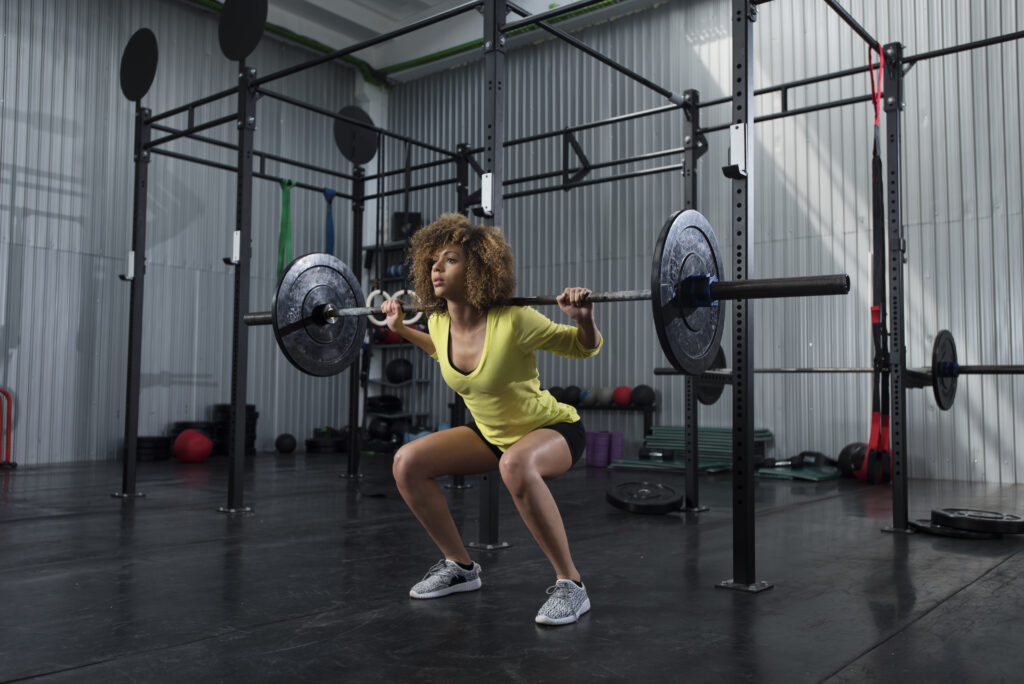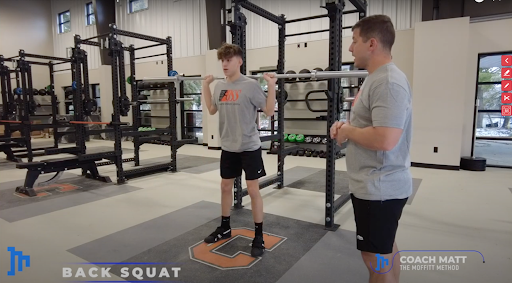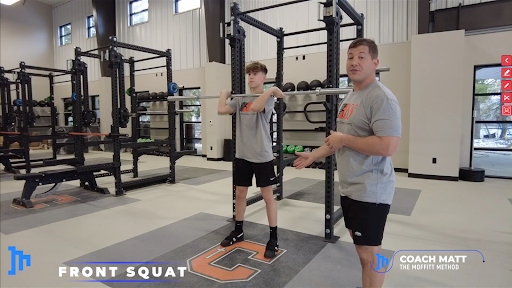The Great Debate: Front Squats vs. Back Squats

Back squat vs. front squat: is one better than the other? When it comes to these lifts, some athletes can be pretty vocal about their preferences. But it’s important to understand the science behind both squats to determine how they should fit into your workout. The types of goals you set, the gains you want, and the sports you play can make a difference. So, to answer this question, we’ll dive into the pros and cons of each. Learn about the differences between the back squat vs. the front squat with The Moffitt Method.
The Back Squat
The back squat requires the athlete to place the bar on the back of the neck, sitting on the traps. This positions the bar and weight distribution in line with the spine, directly over the athlete’s area of the base. In this position, the athlete is able to control the barbell with greater ease. It allows for the isolation of leg muscles for a more direct application.
Some argue that the weight factor makes the back squat better than the front squat. Because more weight can be lifted using the back squat, the logic is that it can develop more muscle. The application of force falls in line with an athlete’s posterior chain. This means the back squat requires more posterior chain recruitment than the front squat. More specifically, the back squat develops the glutes and hamstrings slightly more than the front squat.


The Front Squat
On the other hand, the front squat puts a unique forward torque on the body that the athlete must resist. This is because of the weight placed on the shoulders in front of the neck. The forward torque requires the athlete to use more quadriceps and core activation to keep the bar from falling forward. Therefore, it can be argued that the front squat develops the anterior kinetic chain more than the back squat.
The front squat also helps the athlete prepare for the receiving position of the clean. These two movements are related. Thus, the more repetitions and weight an athlete can front squat correctly, the more likely the athlete is to possess a better receiving position, or “catch,” in the clean.
Back Squat vs. Front Squat: Which Is Best for You?
In terms of the back squat vs. the front squat, it’s not a case of one being a clear winner over the other. Both techniques can be highly effective at building and developing muscle. The back squat has an edge when it comes to glute and hamstring development. On the other hand, the front squat is better at developing the anterior kinetic chain and improving core strength. Ultimately, the best choice will come down to the goals of the athlete and the demands of their sport. And, the best choice may also include a workout plan that features both lifts.
The Moffitt Method is committed to helping athletes reach their performance goals through expertly customized strength and conditioning programs. Our remote training platform and app are designed to give coaches and athletes a decisive advantage in terms of strength, agility, and endurance. And, we do this at a fraction of the cost of hiring a full-time strength coach.
To find out more about The Moffitt Method and how it could transform your team, call 256-667-8325 or contact us online. Don’t go it alone when you can have a century’s worth of combined strength coaching experience in your corner.